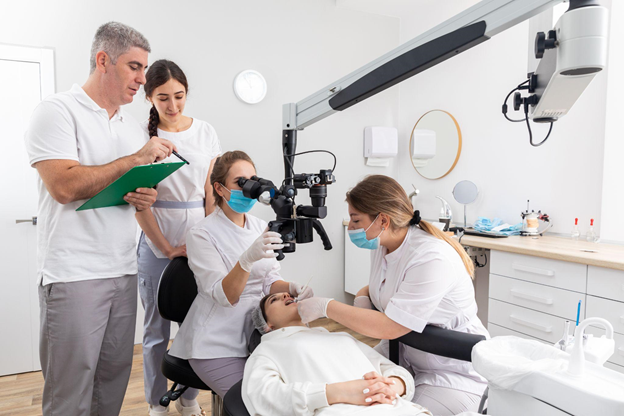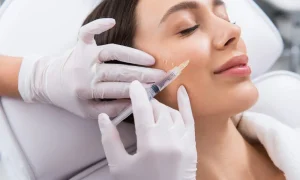Here is a look into the future of restorative dentistry Vineyards FL: you wake up with a throbbing tooth, plug your smart toothbrush into your smartphone and then put it in your mouth. It scans your painful tooth and sends the images to your smartphone while uploading them to the cloud for your dentist to see. The dentist analyzes your throbbing tooth through artificial intelligence and diagnoses a cavity. Next, they schedule an appointment with you.
Later during the appointment, the dentist uses a non-invasive laser to remove the decay-causing a cavity on your tooth. If it requires a crown, a dental technologist does a 3D ultrasound of the tooth and transmits the scans to other highly advanced devices. One of the machines manufactures a biologically active restoration to fill the cavity, while the other moulds a precise cap for your tooth as you wait. These procedures take less than an hour, thanks to modern technology.
That may sound like an illusion, but it is the future of dentistry. Technology has dramatically transformed dentistry for the better, making it easier for dentists and patients. From electronic record keeping to new diagnostic tools and non-invasive dental procedures, the future of dentistry is wide open, says Dominic Thorncroft, a London dentist.
Accurate diagnostic tools
Electronic data keeping and analysis are more available for dentists, which increases the potential for accurate diagnosis, improving the success of dental treatments. When a dentist has your data and dental health history, they can identify your susceptibility to certain oral diseases and tailor your treatment to prevent the risks.
Using digital scanning and screening, a dentist can pinpoint even the smallest cavities before they worsen to severe diseases like gum disease and oral cancer. Intraoral cameras are an excellent example of how technology has improved dentistry. These tiny cameras look like a long pen and help the dentist view what is happening inside your mouth and identify small details like cavities that cannot be seen with the naked eye.
Biocompatible and natural-looking materials
Before, dentists used mercury amalgam to fill teeth affected by cavities. Although they are still used today, a better and more natural-looking option exists thanks to technology. Composite fillings are biocompatible, mercury-free, durable, and natural-looking. These are the ideal option for fillings that look like your natural teeth. Besides, it requires less structure removal, which ensures your total health.
A more futuristic outlook in dentistry would be nanobots, microscopic machines that might restore or straighten your teeth. Others may fight tooth bacteria with wearable toothpaste made of antimicrobial carbon nanotubes, and we can only await that future.
Bioprinting
Despite these innovations, teeth will always need replacements with veneers, crowns, or bridges. Modern dentistry technology uses computer-assisted design and manufacture to mould a tooth from a 3D scan. Researchers are working on technology that could add tooth decay fighting materials to 3D printed teeth. More advanced types of bioprinting are also on the horizon.
Summing up
Overall we can say that modern technology has significantly transformed dentistry, and there is more to come. Accurate diagnosis, biocompatible filling materials, bioprinting, and innovative preventative care are some advancements in dentistry.






More Stories
Enhance Your Culinary Experience: Pairing Cannabis Strains with Local Flavors
How to Choose the Right Cheek Filler and Factors to Consider?
How can you use 11oysters candy to create a romantic moment?